The typical flight simulator enthusiast is a 43 year old male from the United States. He flies simulators 2-3 times per week for about 5-10 hours in total and was introduced to flight simulation 20 year ago. There is a 27% likelihood he already has some sort of pilot license. If so, he was introduced to flight simulation before he pursued his pilot license. Moreover he has a bachelor’s degree, is full time employed, makes 50,000 USD per year before tax, and spends about 250 USD on software and 200 USD on hardware annually. He prefers X-Plane 11, but Prepar3D v. 4 is also popular.
Largest and Most Comprehensive FlightSim Survey Ever
These are some of the conclusions from the annual FlightSim Community Survey 2018 organized by Navigraph together with 19 partners. More than 15,000 respondents contributed which makes this survey the largest of its kind. With 77 questions it is also the most comprehensive, covering demographics, as well as simulation preferences and habits. This year the survey also incorporated specific questions on Virtual Reality. Moreover, partners were invited to contribute with questions of particular interest to them. One such example is the use, perception and preference of freeware versus payware.The final report is shared openly with the community for everyone’s benefit. Each partner is also receiving a customized report presenting their user group in respect to the total community to promote development and recruitment of more pilots to the flight simulation hobby.
To track trends another survey will be published in November 2019. The emphasis will be on diversifying the sample by including additional partner organizations. Companies, organizations, and developers within the flight simulation community are already now invited to contact Navigraph to discuss next year’s set of questions.
X-Plane Going Strong
Consistent with the previous community surveys conducted 2016 and 2017 by Navigraph, the X-Plane simulator from Laminar Research continues to grow in popularity also this year. X-plane is now on par with Lockheed Martin’s Prepar3D.The question regarding primary flight simulator software was elaborated in this year’s survey to allow respondents to estimate how frequently they use a particular simulator. While X-Plane and Prepar3D seem to be equally popular, respondents claim to fly Prepar3D more frequently.
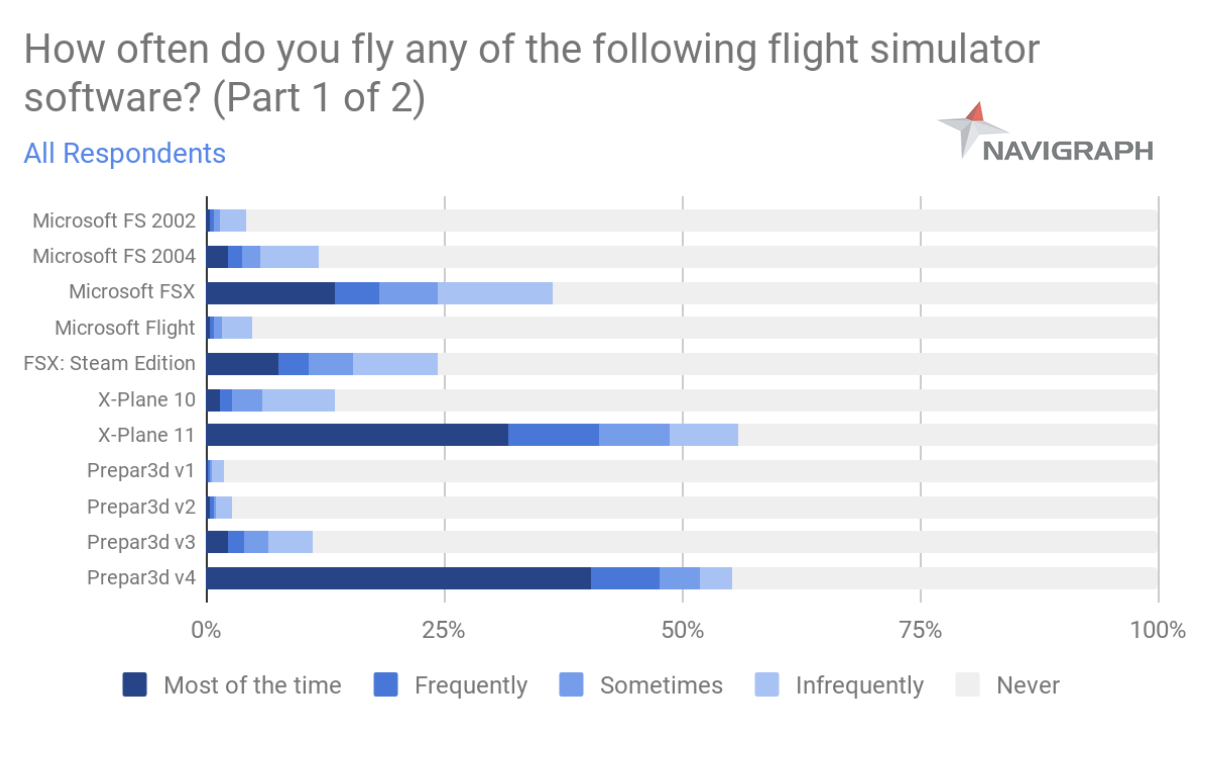
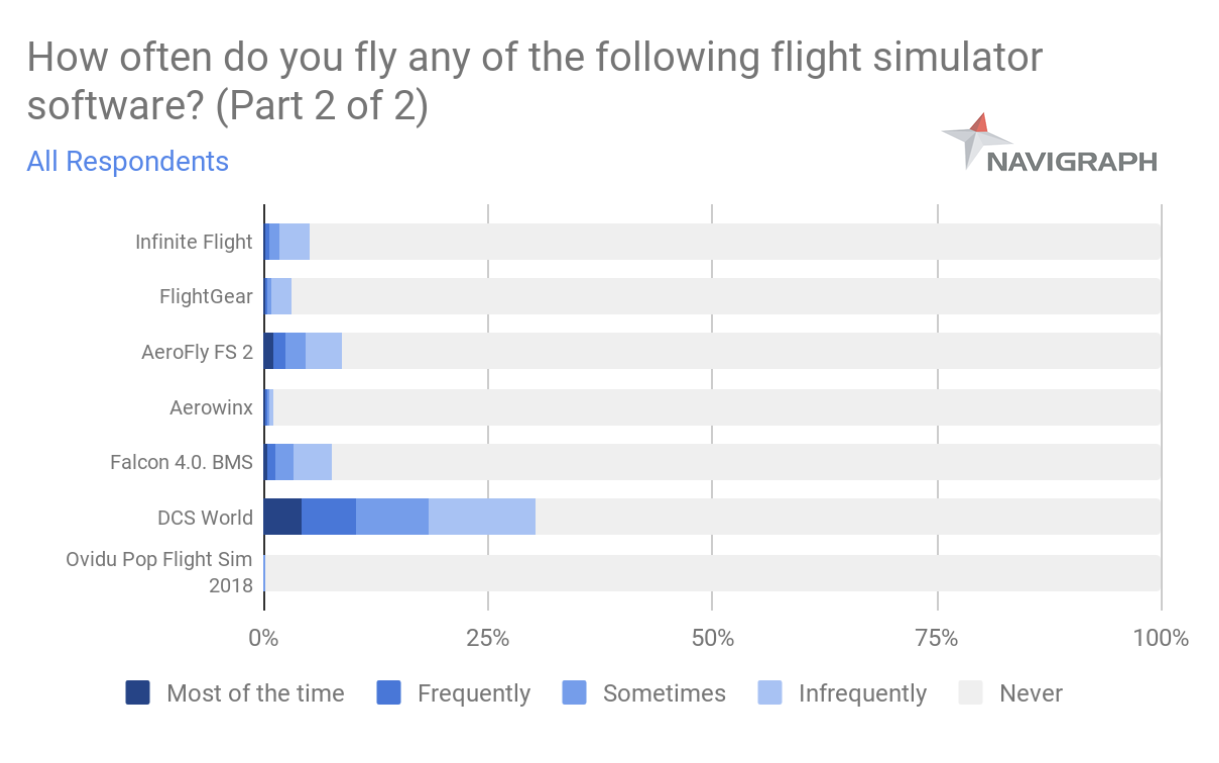
The Typical Flight Simulator Enthusiast
Just like many of the previous surveys seem to indicate, it’s mainly men who engage in flight simulation. 98.2% of the respondents were men, 0.8% were women, and the remaining percent preferred not to say or identified with another gender definition.Everyone seems to be enjoying flight simulation, regardless of age. There is a pronounced peak around 20 year, and a steady level until 50. The age distribution has an impressive tail which indicates that some pilots are over 75 years old.
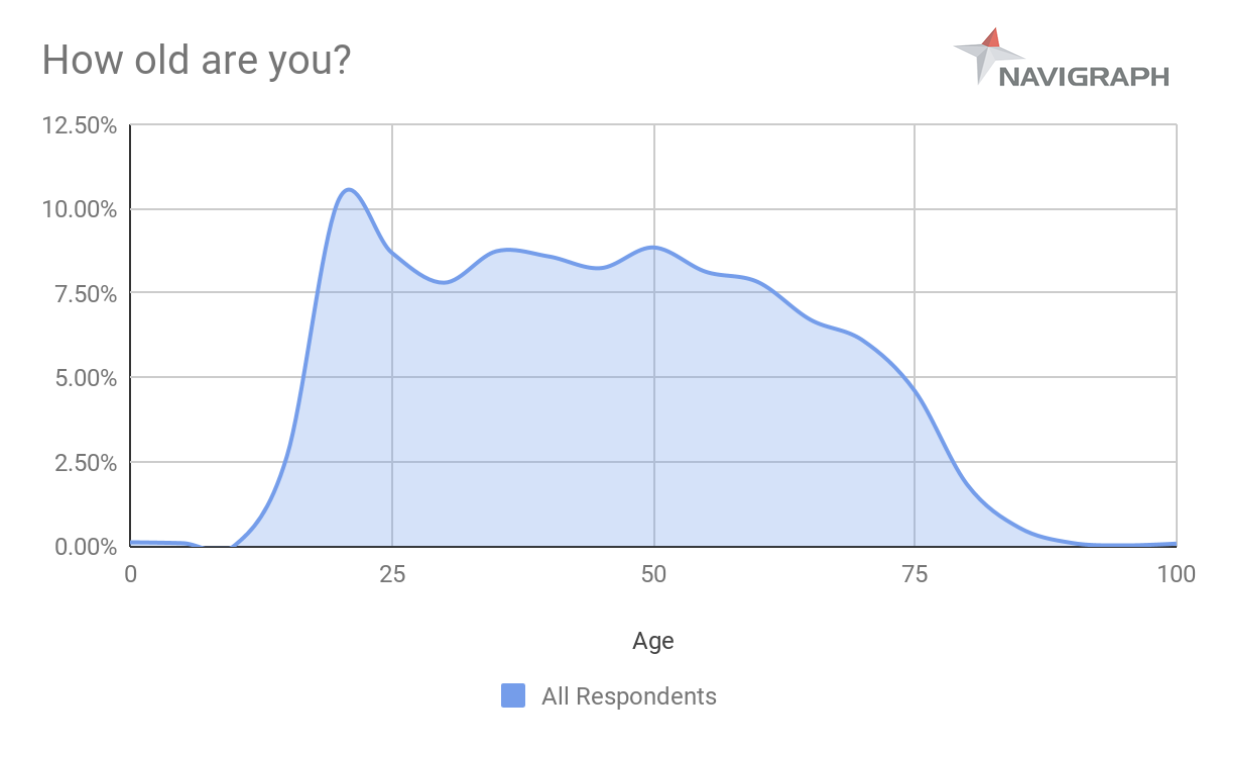
The biggest countries for flight simulation are United States (28.5%), United Kingdom (13.7)% and Germany (10.28%).
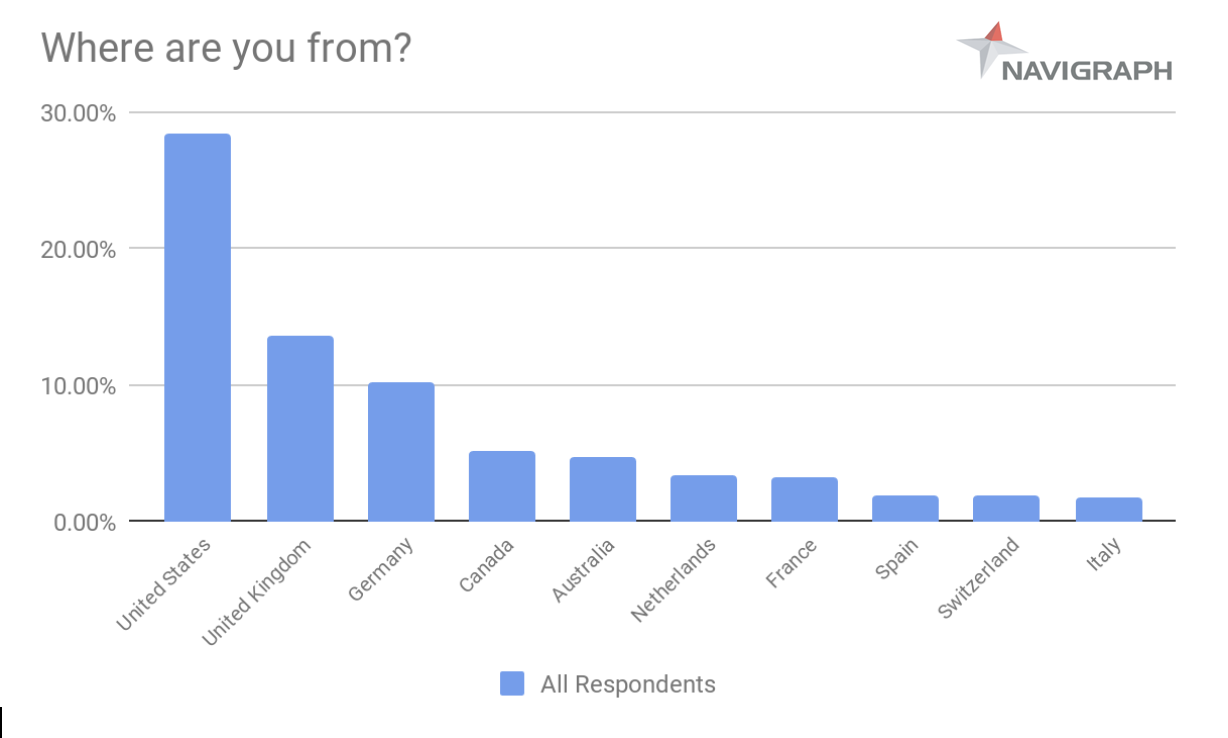
Compared to the total population of a country (for countries with more than 5 million inhabitants) there are the most flight simulator enthusiasts per capita in Norway, Switzerland, Australia, United Kingdom, and the Netherlands.
Relation to Aviation
One out of ten (9.5%) are currently enrolled in a flight school. One out of five respondents (22.4%) work within the aviation domain. 7% are pilots. One out of four respondents (27.3%) have some sort of pilot license. 11.3% have a PPL. 3.1% have a ATPL.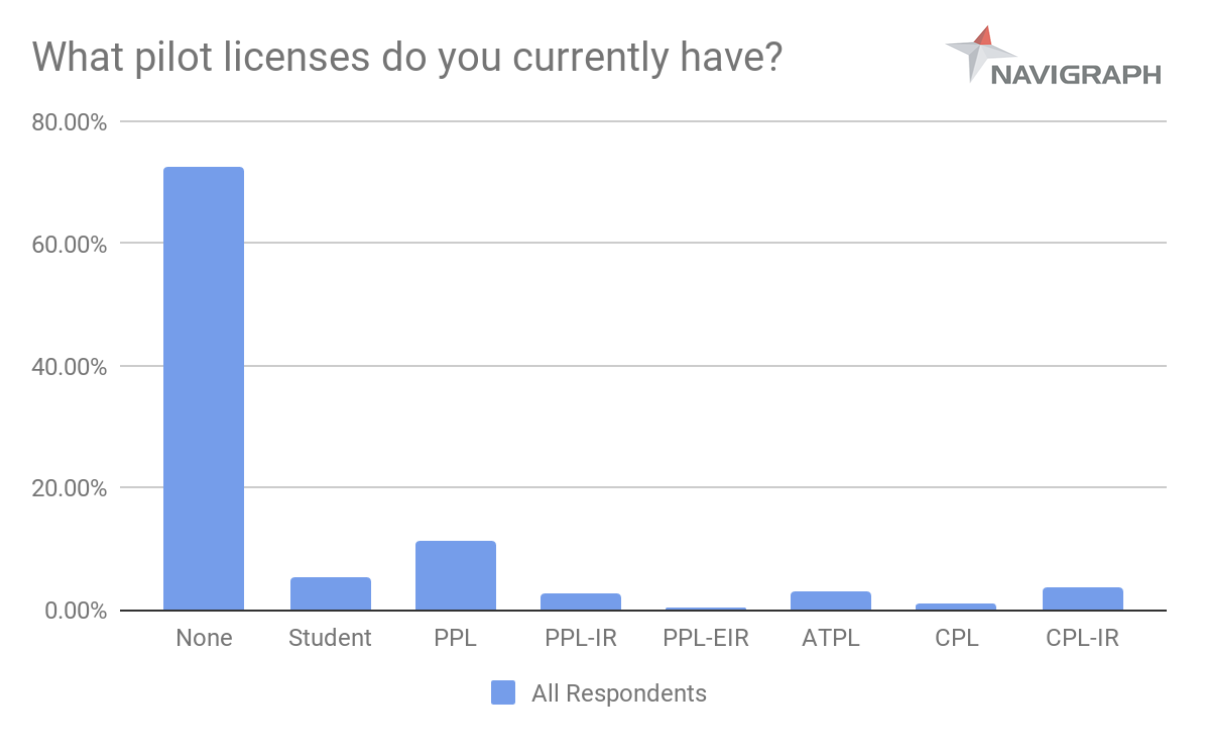
Among those who have a pilot license, two out of three were interested in flight simulation before pursuing a license which seems to indicate that flight simulation is a way to discover aviation also in real life.
Simulation Habits
The average flight simulation pilot is quite experienced. Most pilots fly 2-3 times per week, but sometimes 5 times a week for a total of 5-10 hours. Short/Medium Haul Airliner and Single Engine Private are the most popular aircraft. EDDF seems to be the most popular airport. Pilots fly mainly for entertainment and interest, not so much for the purposes of training or familiarization.Consumption Habits
50% of the respondents spend 300 USD per year on software, but 10% spend 1,000 USD. 50% of the respondents spend 350 USD per year on hardware, but 10% spend 2,000 USD. The most popular stores are Aerosoft and SimMarket.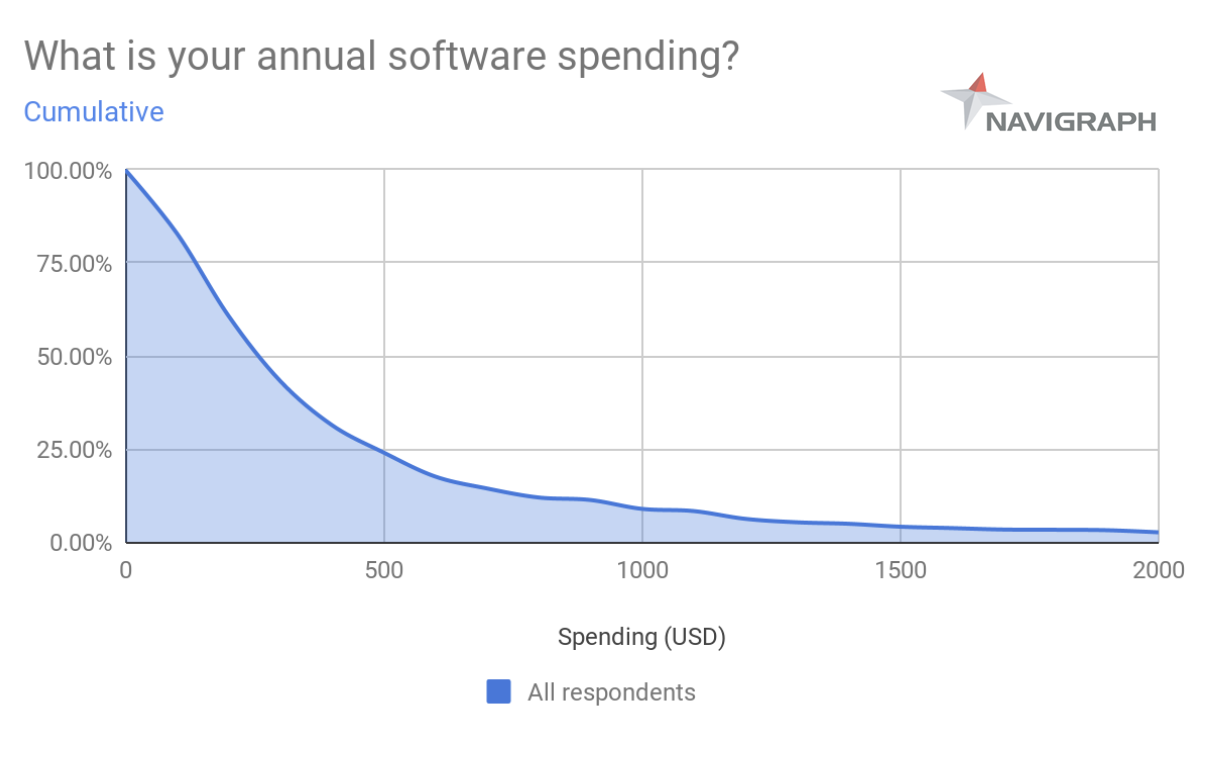
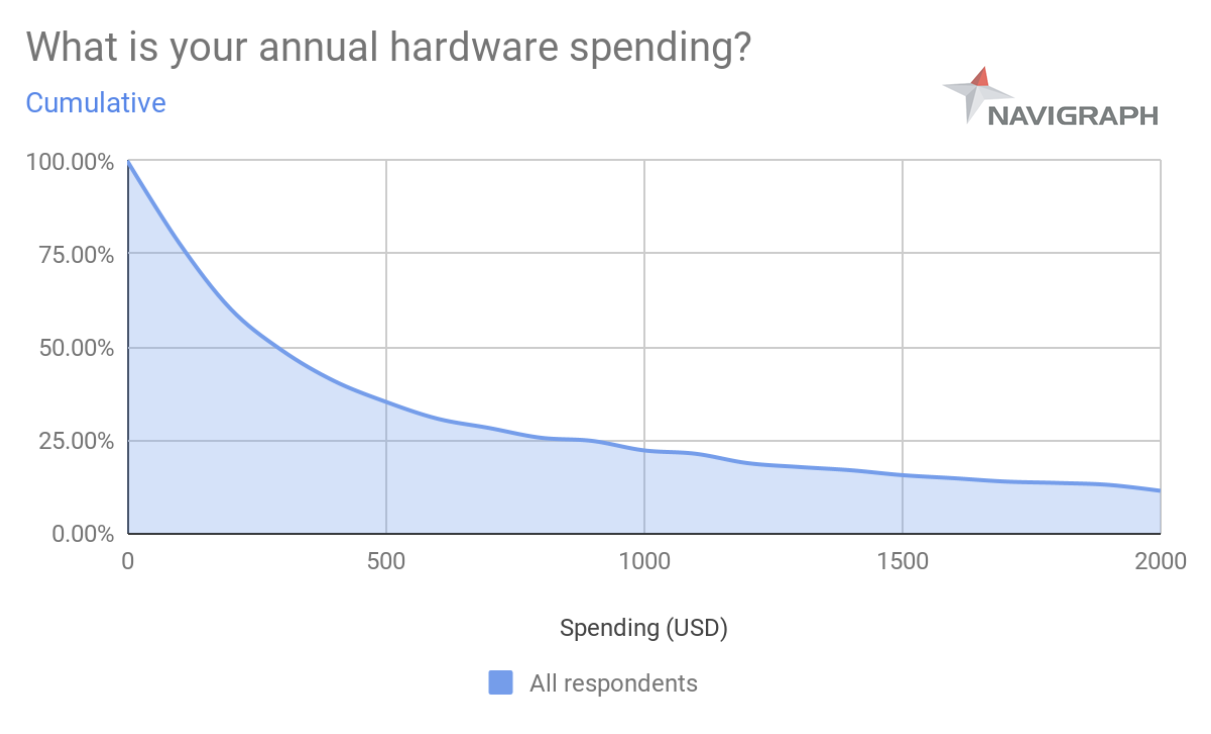
The different payware and freeware options available to a flight simulator is important before purchase, but pilots tend to use more payware now compared to in the past. Flight planning tools are the most popular as freeware.
VR
Virtual Reality seems to have caught on. Many more respondents claim to own and use a VR headset for the purpose of flight simulation. The survey goes into detail about preferred flight simulator software, controls and motion sickness.Report Document
The final report can be downloaded here. It’s licensed under CC BY-SA 4.0 which means you may copy, remix, transform and build upon the results of this survey and then redistribute it to whomever you want in any way.We only ask you to give credit back to Navigraph and keep the same license on your future work.